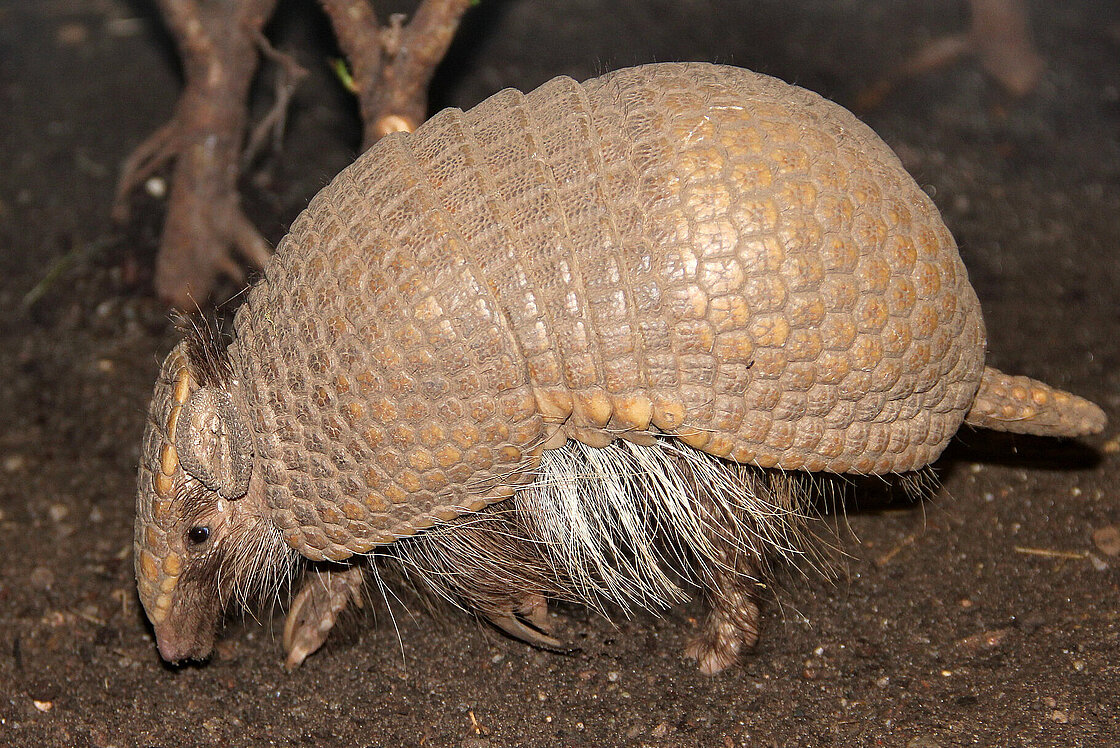

Most animals are unable to bite through this tough material. Its armor is made out of keratin, the same protein in human fingernails. As an additional defense, while curled up, the southern three-banded armadillo will leave a small gap between the edges of the body shells open. One of the only species of armadillo that can roll into a complete ball to defend itself against predators. When threatened, this species is capable of running remarkably quickly to escape, commonly curling into a ball, which even strong-jawed predators such as dogs are unable to break open. This species is hunted throughout its range by man for its meat and is an important food source in some areas. This shell is also very efficient at trapping air, which is warmed by body heat, and thus conserves heat loss. They can completely close their shell around the entire body. Only one species, the nine-banded armadillo (Dasypus novemcinctus), is found in the United States. They use their strong legs and large claws to dig through insect colonies or under bark to get to their food. Other articles where three-banded armadillo is discussed: armadillo: The three-, six-, and nine-banded armadillos are named for the number of movable bands in their armour. The species has a broad diet, composed of a variety of invertebrates, particularly beetle larvae, which are taken throughout the year, along with large quantities of ants and termites during the dry season (July to November), and fruits during the summer rains. The fore feet toes are separated and have 4 claws. The middle three toes on the back feet are grown together and have a thick claw. This armor covers the tail, head, feet, and back of the animal.


Their short, thick tails and elongated heads are also covered in armor. They are named for the three bands across the mid-section of their back armor. When they detect prey, armadillos frantically dig a hole and thrust their nose into it, using their long, sticky tongue to lap up any insects they may find. Three-banded armadillos are blackish-brown in color and are relatively small compared to other armadillo species.


 0 kommentar(er)
0 kommentar(er)
